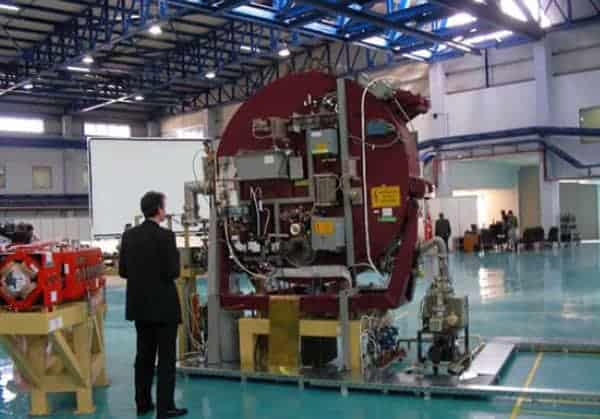
A major scientific project designed to foster collaboration between countries in the Middle East is undergoing a period of difficulty following growing unrest in the region. The Synchrotron-light for Experimental Science and Applications in the Middle East (SESAME) is currently under construction and due to start up in 2015, but the toppling of governments across the region is putting a strain on the ability to guarantee funding to complete the synchrotron.
SESAME is a project that aims to create the region’s first major international research centre by building a synchrotron light source in Jordan. The founding members of SESAME are Bahrain, Cyprus, Egypt, Iran, Israel, Jordan, Pakistan, the Palestinian Authority (PA) and Turkey. The facility would produce X-rays that can be used to study materials in a range of disciplines from biology to condensed-matter physics.
The revolution in Egypt, which led to its president, Hosni Mubarak, stepping down on 11 February, and growing anti-government protests in Iran and Bahrain have put the project on an uncertain footing. “In the short term it is very worrying,” Chris Llewellyn Smith, president of the SESAME council, told physicsworld.com.
‘Moment of great uncertainty’
Although Llewellyn Smith says the unrest has yet to have a direct impact on the project, the former director-general of CERN is working with the SESAME members to put together a financial package that would guarantee the roughly $35m that is needed to complete and open the facility by 2015. “[The package] is now in jeopardy as ministers of member countries are changing,” says Llewellyn Smith. “It is a moment of great uncertainty for the project.”
Llewellyn Smith says that he was discussing SESAME with the Egyptian science minister, Hany Helal, only on Saturday, but yesterday [Tuesday] Helal was removed from office by the military-led government. Egypt was expected to contribute about $5m to the $35m gap but no-one can be now sure what the attitude to SESAME will be for a new prospective government. Similarly, just last week the PA government resigned en masse and the growing unrest in Bahrain is adding to the uncertainty around SESAME members.
However, Llewellyn Smith, who is currently in Washington, DC to discuss a possible US contribution to SESAME, says that he is “optimistic” that in the long term the facility will still be able to open by 2015. He also adds that the situation in the region could even turn out to be positive for the project and science in the region. “With more democratic governments, maybe we can get renewed and greater support for SESAME,” he says.



